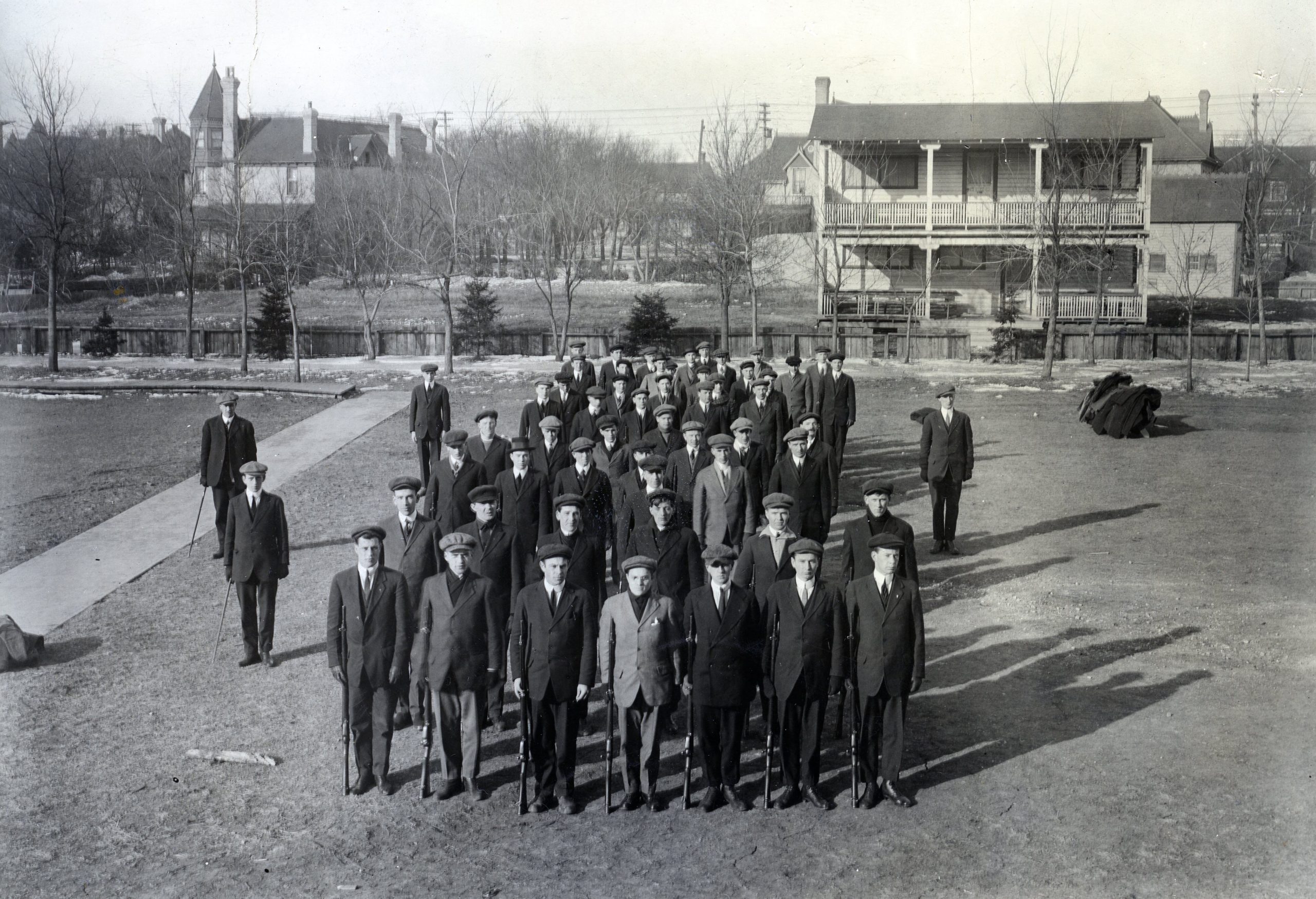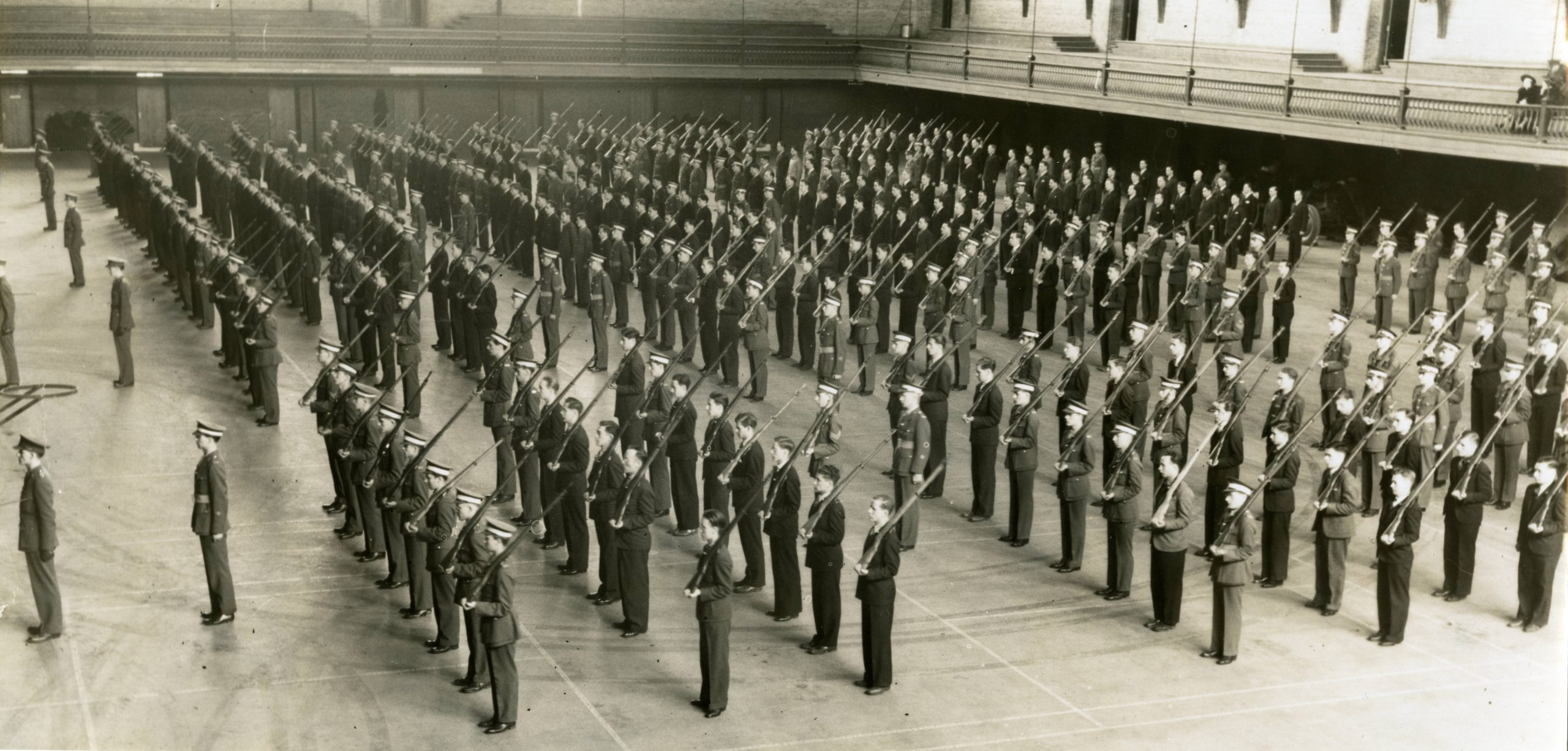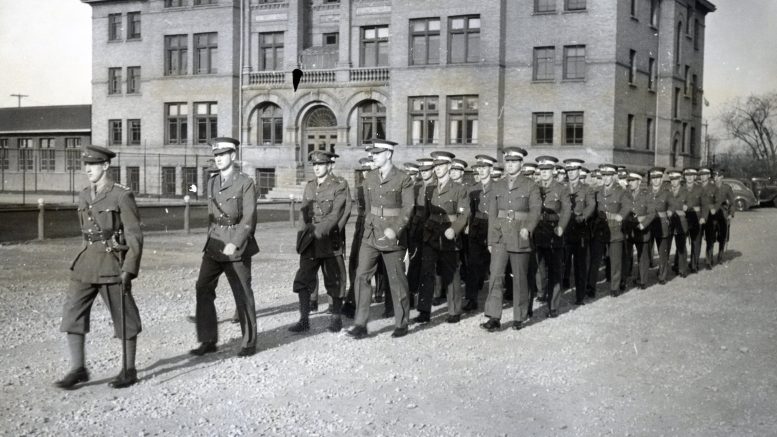Housed by the U of M Archives & Special Collections, the Canadian Officers Training Corps (COTC) fonds recall the university’s military efforts — during both war and peacetime.
Following the outbreak of the First World War, meetings were held at the U of M starting in September 1914 to discuss the best means of providing military training to students. A committee of military instruction was formed, and after correspondence and consultation with the department of militia, it was decided that training could best be fulfilled by organizing a contingent of the COTC — which was established on March 1, 1915.
“The object of the Corps is to give university men a specificized amount of military training, and if they so desire, the necessary instruction to lead the qualifications for lieutenants and captains,” according to a report from the committee of military education.
Members of the COTC who successfully completed training could earn certificate “A,” qualification for the rank of lieutenant in the militia, and certificate “B,” qualification for promotion to the rank of captain.
McGill University was the first in Canada to organize its contingent COTC in 1912, based off of the equivalent University Officers’ Training Corps in the United Kingdom.
The U of M’s contingent COTC originally consisted of eight companies with professor E. P. Fetherstonhaugh serving as adjutant and captain.
The companies were organized as follows: A Company, graduates; B Company, arts and science students of the third and fourth years; C Company, arts and science students of the first and second years; D Company, engineering students; E Company, students from St. John’s College; F Company, students from the Medical College; and G and H Company, students from Wesley College. Captains of each company were R. F. MacWilliams, N. B. MacLean, R. C. Wallace, H. P. Armes, W. A. Ferguson, J. Halpenny, N. R. Wilson and R. F. Argue, respectively. Officers of the Corps received instructions by military authorities and the district office to be properly qualified to instruct their units.
The university board of studies had decided that every student who became efficient in the contingent COTC would be granted a 10 per cent bonus on their examinations and term work. To qualify, a student had to attend at least 40 drills of 45 minutes each, complete the required course and pass the end-of-term inspection.
During the first year, 474 men were enlisted. “Training during the first winter was carried on almost entirely out of doors in a rigorous winter, without uniforms, and with only one hundred rifles for the whole Corps,” read notes by Lt.-Col. Clark Reid Hopper, commanding officer of the U of M’s contingent COTC during the Second World War. “Much of the instruction was carried out by an officer and three sergeant instructors from the active militia.”

Arts and Science Company of the U of M’s contingent COTC on the Broadway campus (September 1914). Photo courtesy of the University of Manitoba Archives & Special Collections, the Canadian Officers Training Corps fonds, UA 41, PC126 (A1991-035)
According to a committee report dated May 4, 1915, “a large majority of these [enlisted men] have now a sufficient knowledge of the handling of men in the various formations, and of the use of the rifle, to make them valuable men in the event of their enlisting for active service.”
In the spring and summer of 1915, members of the contingent enlisted in oversea units. It was concluded that it would be preferrable for men to go as members of a battalion entirely composed of university men to retain their collective identity. In December, Capt. N. R. Wilson and Capt. R. F. Argue visited other western universities to propose the idea, and by 1916, the 196th (Western Universities) Battalion and the XI Canadian Field Ambulance (Western Universities) came into existence.
The U of M was responsible for raising “A” Company of the 196th Battalion, originally quartered in the Manitoba Agricultural College.
The 196th Battalion arrived in England where it was described by Brig.-Gen. J. P. Landry as “well officered, well organized and well disciplined and undoubtedly one of the best sent over from Canada.” Recognized for its potential as a source of officer material, the battalion was broken up as members were sent to Officers’ Training Centres and other depleted battalions.
By the end of the First World War, the U of M’s contingent COTC trained over 2,000 students and university graduates. The Corps was reorganized afterwards, but continued during peacetime to provide officers for the Canadian Militia. During the interwar years, the unit operated under the command of Lt-Col. N. B. MacLean (1920-27), Lt-Col. E. P. Fetherstonhaugh (1927-32), Maj. H. P. Armes (1932-38) and Capt. W. F. Riddell.
Amid the outbreak of the Second World War in 1939, enrolment of the U of M’s contingent COTC increased. An article from 1943 in the Manitoban indicates that the training syllabus consisted of squad and platoon drill, small arms training, physical training, map reading, field craft and fundamental training. Training was reported to be carried out at Minto Armoury, with the requirement of six hours of military training per week.

Members of the U of M’s contingent COTC in open-order formation at Minto Armoury (1940). Photo courtesy of the University of Manitoba Archives & Special Collections, the Canadian Officers Training Corps fonds, UA 41, PC126 (A1991-035)
In an undated promotional brochure addressed to prospective undergraduates, the U of M’s contingent COTC is described as offering benefits to those who enrol. “You may qualify as a lieutenant or 2nd lieutenant in the Corps of your choice! By qualifying for the Queen’s Commission you demonstrate to a future employer the very important assets of leadership, character and ability!”
The brochure continues, “you have an opportunity to receive financial assistance during the winter, and $200.00 a month and all found while attending one of the many army schools across Canada during your summer months! After you have registered next September, we would be very pleased to have you call on the resident staff officer, Room 224, UMSU Building, for further information. Don’t pass up this splendid opportunity!”
In 1962, the U of M’s contingent COTC was reported by the Manitoban to still be active on campus. For eighteen Tuesday evenings throughout the academic year, approximately 45 students were noted to train in the Services Wing of the Students’ Union Building under the direction of the university contingent officers.
A few years later, in 1968, all university-based officer training programs were discontinued by the federal government.


